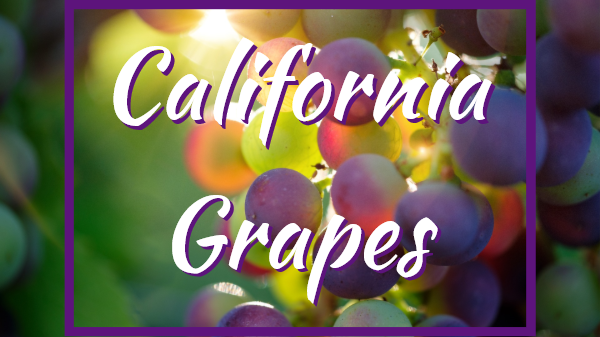More than 85 varieties of grapes are grown commercially in California. The classics still represent the majority of table grape sales worldwide, but in the last 10 years new cultivars have been making dramatic changes in the marketplace.
Grape breeders such as International Fruit Genetics in Bakersfield have developed successful core varieties such as Sweet Celebration, Jack’s Salute, Sugar Crisp, and Sweet Enchantment. The company is also behind novelty varieties that create excitement in the produce section such as Cotton Candy with its toffee-caramel flavor profile, and crimson-hued Funny Fingers.
Another innovator, Giumarra Vineyards Corporation in Bakersfield, CA BB #:111401 also continues to deliver new varieties through its breeding program and ARRA brand.
Mimi Corsaro, vice president of marketing, explains: “Our focus has been to educate consumers on the multitude of new grape varieties available from Giumarra Vineyards. We’re in full production this year on our Passion Fire, Passion Punch, Muscato Amore, Sugar Drop, Sweeties, Mystic Dream, and Mystic Star varieties. We’ve updated colorful branded ARRA bags and labels for our red and black proprietary varieties to introduce to the market this year.”
Out with the old, in with the new
The California table grape industry is riding a wave of vine replacements. It’s a gamble because the time between planting and harvest can take three years, and there’s never a guarantee that a new variety will perform well among retailers and consumers.
New plantings of proprietary varieties are coming into full production.
“New varieties are producing 20 to 35 percent more per acre,” said Jared Lane, vice president of sales and marketing at Grapeman Farms, LP, headquartered in Los Angeles BB #:274451. “Of our production, we’re up over 200 percent of the new varieties. The berries are better tasting, larger, and have better shelf life than ones from past decades.”
Jeff Olsen, president of the Chuck Olsen Company, Inc. BB #:151376 in Visalia, expounds on the relationship between space, yield, and cost.
“The trellis system means there’s more room for fruit to grow. More bunches per box brings down costs. If you get 700 to 800 boxes per acre at $15-16 to produce, versus 2,000 boxes per acre at that cost, you’re much more profitable at $14 per box FOB.”
For Rob Spinelli, sales manager at Anthony Vineyards, Inc. BB #:111344 in Bakersfield, tearing out old vines is warranted in many cases, but not all. “Some older varieties are being pulled out, including Flames, but there’s still a need for them as they are the earliest red variety and there isn’t a replacement as of now.
“We’ve also eliminated seeded Red Globes and Thompson Seedless,” he said, “which are costly to cultivate and don’t hold up well. Higher profile and ‘novelty’ varieties make a splash in the market—Cotton Candy, Candy Hearts, Candy Dreams, Candy Snaps, and the black, elongated Sweet Sapphire.”
With the proliferation of new varieties, Spinelli admits, “There is some confusion among consumers and retailers, because some marketers call them by a brand name instead of varietal names.” Despite the competition though, he said, “It’s good for the industry—more shelf space.”
Anthony Vineyards merchandises at store level by both varietal name and pack style. Previous fruit offerings in plastic bags made it hard to differentiate conventional from organic. As a result, Spinelli says, “Retailers lost out on scanning the correct, higher price. We used that experience and pushed it into the specialty grape varieties.”
Randy Giumarra, vice president of sales at Giumarra Vineyards, puts it this way: “We expect that varietal changeover and consolidation will continue within the industry. Hopefully, we’ll see consumption continue to increase globally as customers appreciate the improved attributes of new grape varieties.”
This is an excerpt from the most recent Produce Blueprints quarterly journal. Click here to read the full version.



